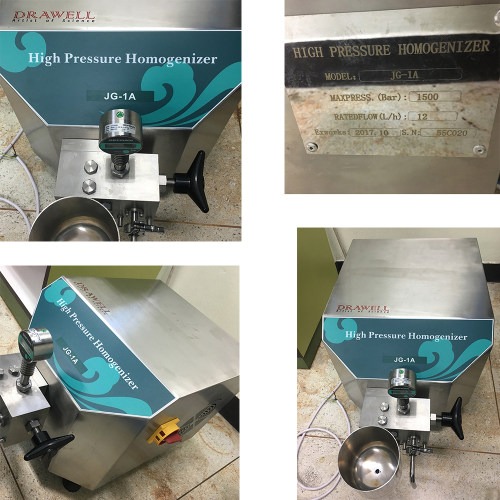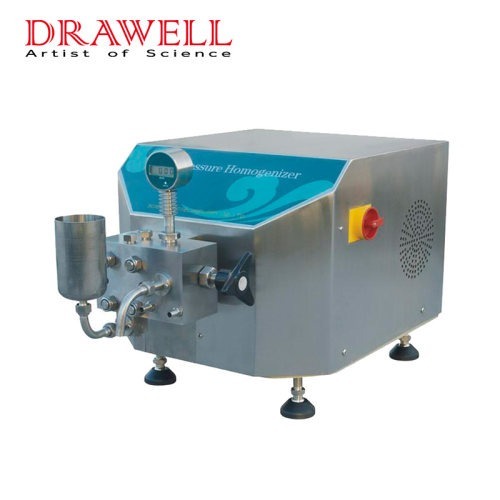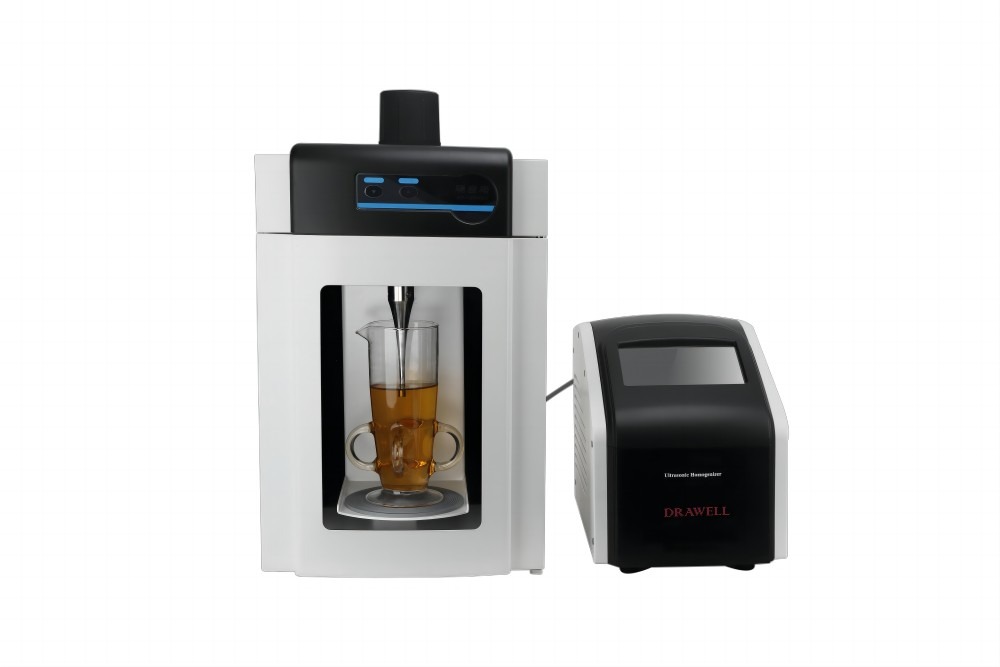High-pressure homogenizers and microfluidizers are often compared because they are both commonly used in the processing of emulsions, suspensions, and dispersions to reduce particle size and achieve a more uniform distribution of particles. Both technologies use high pressure to achieve this, but they differ in their mechanisms of action and the specific applications for which they are best suited. Here we will talk about the principle of them and how to choose the proper instrument.

The operating principles of high-pressure homogenizers and microfluidizers are different.
High-Pressure Homogenizer Principle
A high-pressure homogenizer operates by forcing a fluid mixture through a small gap or orifice at high pressure. The fluid mixture is first pumped into a high-pressure chamber where it is pressurized by a reciprocating pump. The fluid is then forced through a small orifice, typically in the range of 20-200 microns, at a high velocity. This creates intense shear forces and turbulence, which break down the particles and droplets in the fluid mixture. As the fluid exits the orifice, the pressure drops suddenly, causing cavitation and a further reduction in particle size. The homogenized fluid is then collected and can be further processed or used as-is.
Microfluidizer Principle
In contrast, a microfluidizer uses a high-pressure pumping system to force a fluid mixture through a microfluidic chamber that contains precisely engineered channels and chambers. The fluid mixture is subjected to intense shear and cavitation forces as it passes through these channels, which reduces the particle size and produces a more uniform product. The microfluidic chamber typically consists of multiple channels that intersect and create microscale eddies and turbulence, which enhance the mixing and homogenization of the fluid. The size and geometry of the channels and chambers can be tailored to achieve specific mixing and homogenization effects, making the microfluidizer a highly versatile tool for particle size reduction and dispersion.
Overall, high-pressure homogenizers and microfluidizers both use high-pressure forces to break down particles and create a more uniform product, but they differ in the specific mechanisms of action and operating principles. So we need to choose the proper instrument by considering the following factors:
3 Consider Factors to Choose High-Pressure Homogenizer or Microfluidizer
Performance:
Both high-pressure homogenizers and microfluidizers can achieve similar results in terms of particle size reduction and homogenization. However, the choice between the two technologies often depends on the specific application and production requirements. High-pressure homogenizers are generally more suitable for larger-scale production and applications that require higher throughput, while microfluidizers are better suited for smaller-scale production and applications that require more precise control over particle size and distribution.
Maintenance and Safety:
Both high-pressure homogenizers and microfluidizers require regular maintenance to ensure optimal performance and prevent breakdowns. However, microfluidizers typically require less maintenance than high-pressure homogenizers due to their simpler design and fewer moving parts. In terms of safety, both technologies can be hazardous due to the high pressures involved, and proper safety protocols should be followed when operating either device.
Cost:
The cost of a high-pressure homogenizer or microfluidizer can vary depending on the specific model and features. In general, the price of high-pressure homogenizers is less than microfluidizers, especially for large-scale production. However, microfluidizers can offer cost savings in terms of reduced energy consumption, smaller footprint, and reduced material waste due to their ability to achieve more precise particle size reduction.
Overall, the choice between high-pressure homogenizers and microfluidizers depends on the specific application and production requirements. Both technologies offer advantages and disadvantages in terms of performance, maintenance and safety, and cost, and the best choice will depend on the specific needs of the user.



